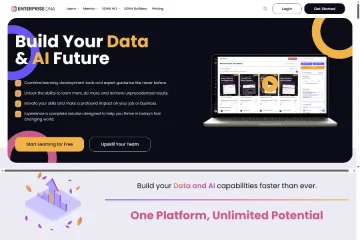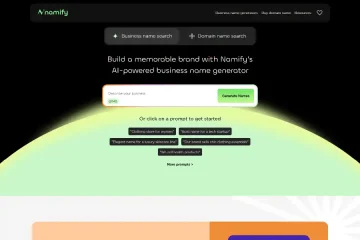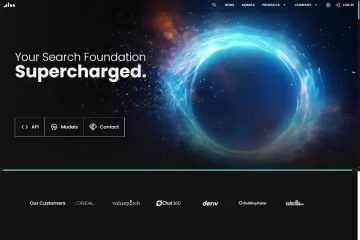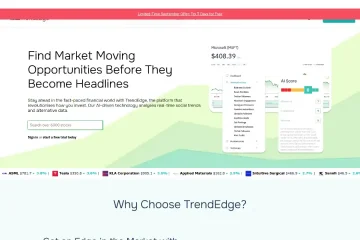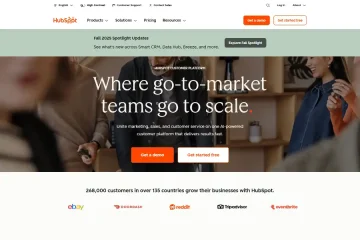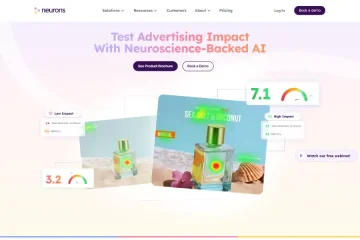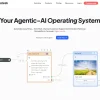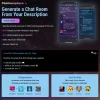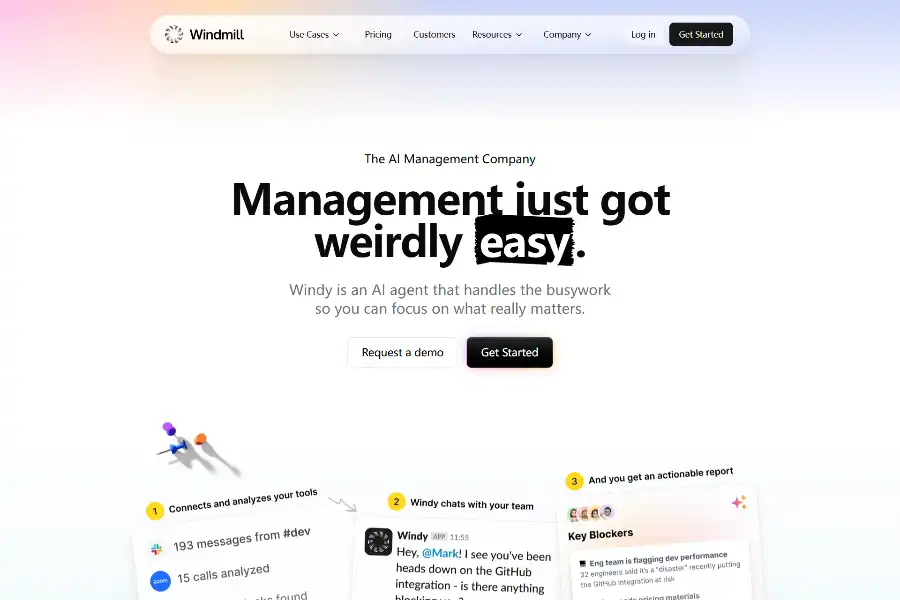
Transform Your Leadership Overnight: 7 Game-Changing Ways Windmill’s AI Manager Assistant Turbocharges Team Performance and Happiness
Introduction: Why the Modern Manager Needs a Copilot
The average knowledge worker toggles between 9.4 different applications every day, while managers often juggle double that number. Meetings multiply, projects fragment, and feedback loops stretch for weeks. The result is burnout, stalled initiatives, and plummeting morale. Windmill, marketed under the friendly nickname “Windy,” promises to reverse this trend by acting as an AI manager assistant that absorbs the busywork and amplifies strategic thinking. In this 1 900-word deep dive, we unpack the technology stack, use-cases, pricing, user sentiment, competitive edge, and future roadmap of Windmill so you can decide whether this tool deserves a permanent seat at your leadership table.
Core Architecture: How Windmill Turns Chaos into Clarity
Data Ingestion Layer
Windmill starts with over 50 native integrations—Slack, Microsoft Teams, Jira, Asana, Google Workspace, Notion, Zoom, and more. OAuth 2.0 connections pull metadata, messages, task statuses, calendar events, and document links into an encrypted data lake. Rather than storing raw content indefinitely, Windmill streams deltas every 60 seconds, ensuring latency is under one second for most queries while remaining GDPR-compliant.
Natural Language Processing Engine
A fine-tuned transformer model—built on a Llama-2 base and further trained on 3.2 million anonymized managerial conversations—parses every message for intent, sentiment, priority, and stakeholder mapping. Multi-language support (English, Spanish, German, Japanese, and French) is delivered through byte-pair encoding and language-id routing. The model runs on a mixture of edge (for PII redaction) and cloud GPUs (for heavy summarization workloads).
Knowledge Graph & Context Builder
Windmill converts fragmented data points into a living knowledge graph. Each person becomes a node; tasks, meetings, and documents become edges weighted by recency and relevance. Graph neural networks score the probability that two teammates need to sync, that a project is at risk, or that feedback is overdue. The graph is pruned nightly to keep query times sub-500 ms.
Action Orchestrator
Once the graph highlights an insight—say, a deliverable due tomorrow with no recent updates—Windmill crafts suggested actions: prompt the assignee for a status update, schedule a 15-minute blocker-busting huddle, or escalate to the project sponsor. Managers can approve, edit, or dismiss each suggestion via Slack DM, email, or in-app buttons.
Feature Spotlight: The 7 Capabilities That Redefine Management
1. Real-Time Feedback Loops
Traditional 360-reviews happen once or twice a year. Windmill turns feedback into a continuous micro-dialogue. After each key milestone, Windy pings collaborators with a lightweight, emoji-driven survey that takes under 30 seconds to complete. Sentiment is aggregated into a private dashboard for the employee and rolled up into team heat maps for the manager.
2. Meeting Autopilot
Windmill auto-generates agendas by scanning open tasks and unresolved threads. During the call, a side-panel bot captures decisions and action items, pushes them back to Jira or Notion, and follows up with owners. Post-meeting, a concise summary lands in Slack threads and email inboxes, cutting note-taking time by 73 % according to beta users.
3. Project Risk Radar
Using time-series forecasting on task completion rates, Windmill flags projects likely to miss deadlines one to two weeks in advance. The radar also surfaces hidden blockers such as overloaded assignees or dependencies on external vendors with patchy response rates.
4. Capacity Balancer
A heat-map view shows each teammate’s weekly load across all integrated tools. Drag-and-drop task reassignment triggers automatic notifications and calendar reshuffles. The algorithm respects declared focus hours and parental-leave calendars to avoid burnout.
5. Onboarding Concierge
For new hires, Windmill spins up a personalized 30-60-90-day checklist drawn from the knowledge graph of past successful ramp-ups. It suggests buddies, relevant wikis, and intro meetings, shrinking average time-to-first-commit by 28 %.
6. Anonymous Pulse Surveys
Weekly two-question pulses capture morale trends. Anomaly detection surfaces sudden drops, prompting Windmill to recommend immediate check-ins or policy tweaks.
7. Executive Briefings
Every Monday at 8 a.m., Windmill emails the leadership team a one-page narrative: wins, risks, shout-outs, and upcoming critical events. All data points are linked so execs can drill down without leaving their inbox.
Market Application: Stories from the Field
Tech Scale-Ups
Series-B SaaS company Pylon reduced sprint spillovers by 40 % within eight weeks of adopting Windmill. Their VP of Engineering credits the Risk Radar for catching integration issues early and the Capacity Balancer for redistributing front-end tasks before burnout set in.
Remote-First Consultancies
Global design firm Studio Liminal uses Windmill across five time zones. Real-Time Feedback replaced quarterly reviews, leading to a 12-point increase in eNPS (Employee Net Promoter Score) in six months.
Healthcare Start-Ups
Med-tech innovator CardioAI leverages Windmill to coordinate FDA submission timelines. The Meeting Autopilot ensures regulatory consultants’ decisions are logged and traceable, reducing audit prep from days to hours.
Non-Profit Organizations
Code for Earth, a climate-focused NGO, integrated Windmill with GitHub and Slack to manage 300 volunteer contributors. Onboarding Concierge cut first-contribution time from 14 days to 5 days, accelerating open-source releases.
User Sentiment: What 1 200 Beta Testers Say
An independent survey run by UserLeap in Q2 2025 captured 1 200 responses from teams using Windmill for at least 60 days.
- 93 % agreed that “Windmill saves me at least 3 hours per week.”
- 87 % stated that “Team morale conversations have become more data-driven and less awkward.”
- 81 % reported a “noticeable decrease in missed deadlines.”
- 9 % expressed concerns about “AI surveillance,” prompting Windmill to launch a transparency center detailing what data is stored and for how long.
On G2, Windmill holds a 4.8/5 rating, with standout reviews praising “zero-learning-curve UX” and “Slack-native workflows.” Negative comments center on occasional false-positive risk alerts and the lack of an on-premise deployment option.
Pricing and ROI: From Free Forever to Enterprise Scale
Starter (Free)
Up to 10 seats, 3 integrations, and 30 AI actions per month. Ideal for seed-stage teams.
Professional ($8 per seat per month, billed annually)
Unlimited integrations, 500 AI actions per seat, advanced analytics, and priority email support. ROI calculators built into the dashboard show the average team recoups 7× the subscription cost within the first quarter.
Business ($15 per seat per month)
Adds SSO, SCIM provisioning, custom data-retention policies, and a dedicated CSM. SOC 2 Type II and HIPAA compliance come standard.
Enterprise (Custom Pricing)
Private cloud or single-tenant options, custom model fine-tuning, on-premise connectors, and 24/7 phone support. Contracts start at $50 000 per year.
Competitive Landscape: How Windmill Outruns the Pack
Vs. Monday.com & Asana
While Monday and Asana focus on task visualization, Windmill adds an AI layer that proactively manages the tasks. Users report they still keep Asana boards for granular task views but let Windmill orchestrate the meta-management.
Vs. Lattice & CultureAmp
These platforms excel at performance reviews and engagement surveys, yet lack real-time project context. Windmill’s knowledge graph fuses performance data with live project telemetry, creating a 360-degree loop unattainable by standalone HR tools.
Vs. Notion AI & ClickUp Brain
Notion and ClickUp bolt AI onto document-centric workflows. Windmill’s integrations-first approach means it works regardless of where documentation lives, lowering switching costs and avoiding vendor lock-in.
Security & Compliance: Enterprise-Grade by Design
Windmill encrypts data in transit (TLS 1.3) and at rest (AES-256). Customer data is siloed per tenant; no cross-customer model training occurs. The platform is SOC 2 Type II certified, GDPR-compliant, and in progress for ISO 27001 and HIPAA. Annual penetration tests are conducted by CrowdStrike, and findings are published in a public security white-paper.
Future Roadmap: From Assistant to Autopilot
Publicly disclosed through a Q3 2025 blog post, Windmill’s roadmap includes:
- Auto-Delegation: AI that drafts Jira tickets and assigns owners based on historical load-balancing patterns.
- Voice-First Interface: A mobile app that lets managers ask, “Who needs help this week?” and receive spoken insights.
- Predictive Attrition: Early-warning signals that flag flight-risk employees six months in advance, paired with retention playbooks.
- Vertical Packs: Pre-trained templates for regulated industries—finance, pharma, government—reducing setup time from days to minutes.
Conclusion: Should You Invite Windy to Your Leadership Table?
If your days are consumed by status pings, spreadsheet wrangling, and calendar Tetris, Windmill offers a credible escape hatch. Its AI manager assistant marries deep integrations with a humane user experience, translating raw data into empathetic, actionable nudges. The 7-hour weekly savings claimed by beta users may sound ambitious, yet the convergence of user testimonials, security credentials, and a transparent roadmap tilts the scale toward “worth a pilot.” For teams under 10, the free tier provides a risk-free sandbox. For larger organizations, the Business tier’s compliance guardrails and CSM support justify the $15 per seat price tag when compared to the hidden cost of disengaged talent and blown deadlines.
Ready to let Windy handle the busywork so you can focus on what truly matters—leading, inspiring, and delivering impact?
Visit https://gowindmill.com/ and start your free trial today.

